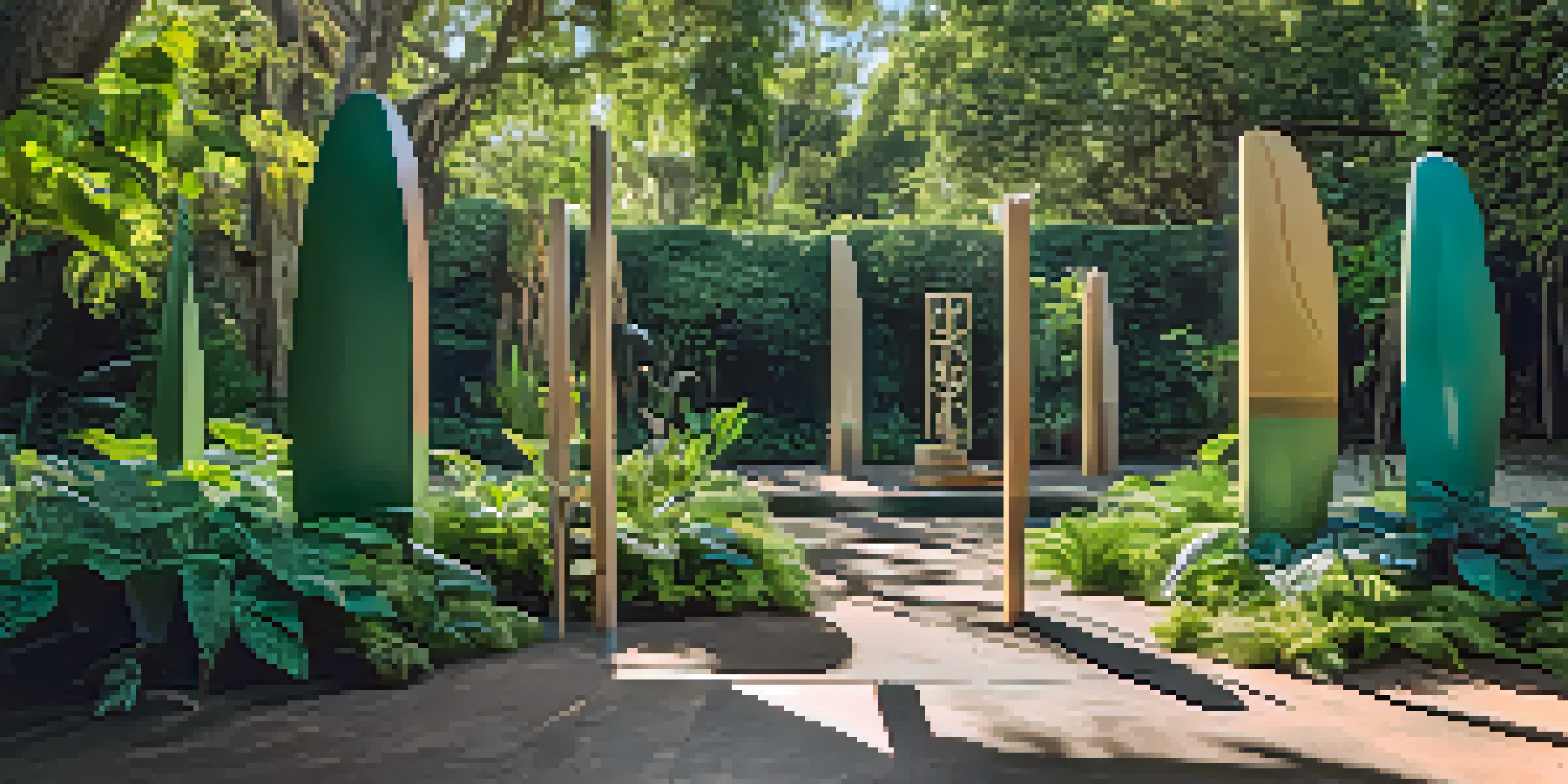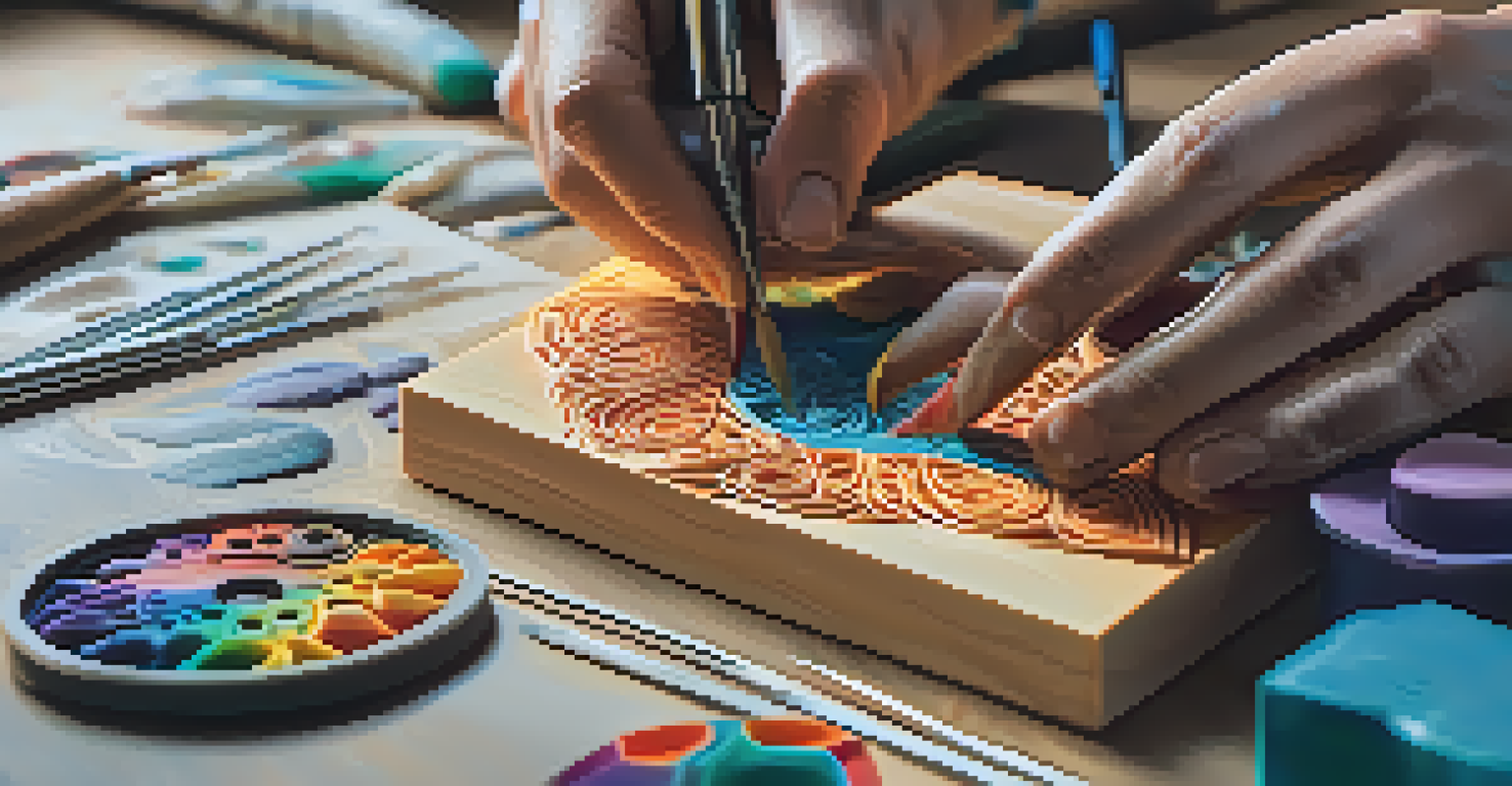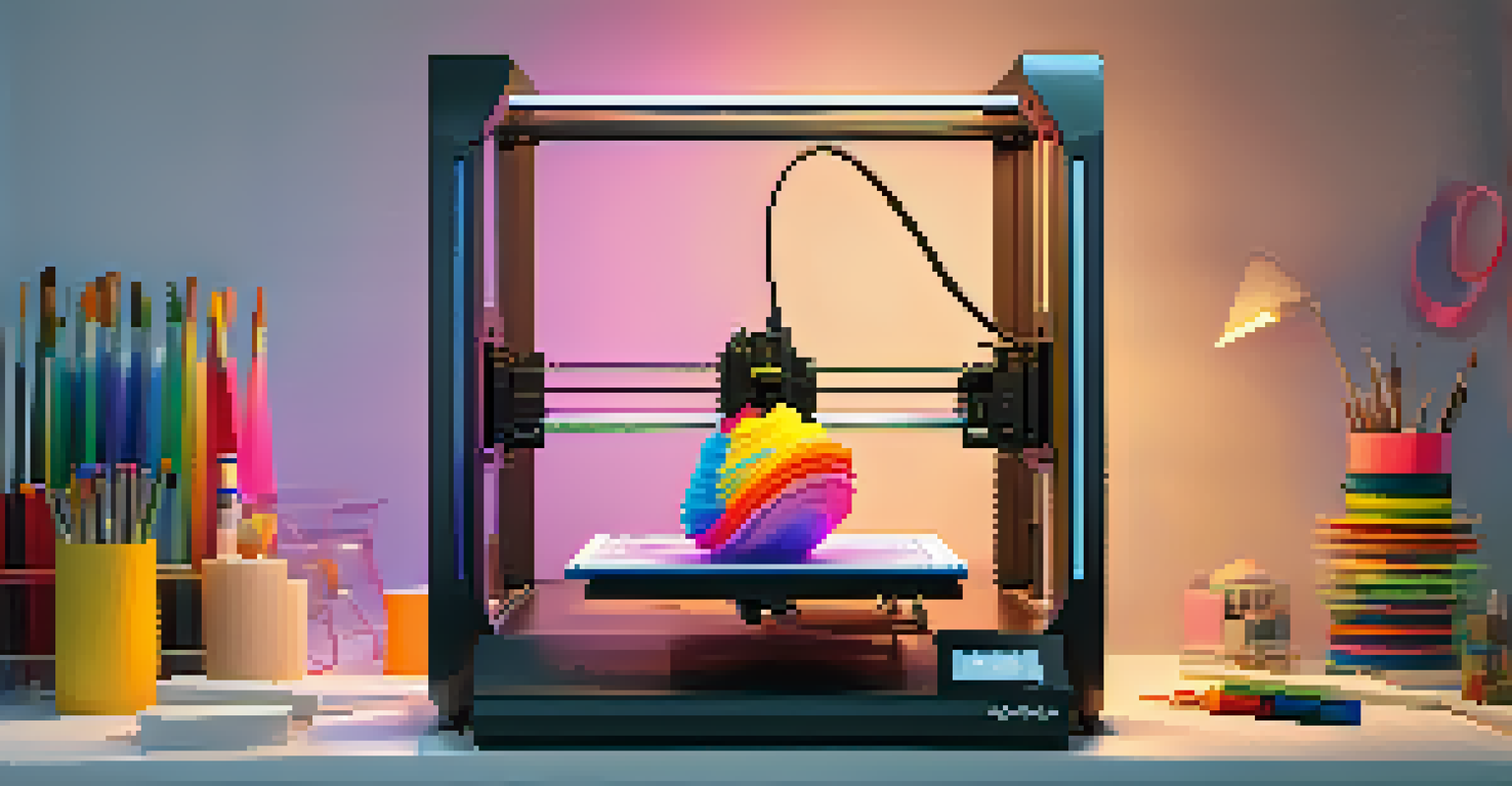Innovative Materials for Carving in the Digital Age

Introduction to Digital Carving Materials
In the digital age, carving has evolved significantly, moving beyond traditional tools and methods. Artists and craftspeople now have access to a range of innovative materials that enhance creativity and precision. From high-tech polymers to advanced composites, these materials are revolutionizing how we think about carving.
Art is never finished, only abandoned.
Digital carving techniques, such as CNC machining and laser cutting, have introduced new possibilities for detail and design. These methods allow for intricate patterns and shapes that would be nearly impossible to achieve by hand. As we explore the innovative materials available, it’s essential to understand how they integrate with these digital methods.
Ultimately, the intersection of technology and artistry has opened doors for both amateur and professional carvers. Embracing these advancements not only improves efficiency but also expands the creative horizons for artists in various fields.
High-Tech Polymers: A Game Changer
High-tech polymers, such as thermoplastics and acrylics, are quickly becoming favorites among carvers. Their malleability and durability make them ideal for intricate designs and long-lasting projects. Artists appreciate how these materials can be heated and shaped without losing their structural integrity.

For example, a sculptor might use a polymer to create a detailed model that can withstand the rigors of outdoor display. Additionally, these polymers can be easily painted or finished, allowing for a wide range of artistic expression. The versatility of high-tech polymers means they can be used in various projects, from small-scale jewelry to large sculptures.
Innovative Materials Transform Carving
The introduction of high-tech polymers, biodegradable options, and composites is revolutionizing the carving landscape, enhancing both creativity and durability.
Moreover, their lightweight nature makes them easier to handle, reducing fatigue during extended carving sessions. With these properties, it's no wonder that high-tech polymers are becoming a staple in the toolkit of contemporary carvers.
3D Printing: Redefining Carving Techniques
3D printing has emerged as a revolutionary tool in the carving world, enabling artists to bring their digital designs to life with unprecedented speed. Using materials like resin and filament, carvers can create complex shapes that can then be refined and detailed. This method allows for rapid prototyping, meaning artists can experiment without the fear of wasting materials.
Innovation distinguishes between a leader and a follower.
Imagine an artist designing a whimsical figurine on a computer, then 3D printing it to see how it translates into a physical form. This process not only enhances creativity but also provides instant feedback, allowing for quick adjustments and improvements. It's like having a digital sketchbook that can materialize into a tangible piece.
As 3D printers become more accessible, we're likely to see a surge in their use among hobbyists and professionals alike. This tech-savvy approach to carving merges artistry with engineering, paving the way for new styles and techniques that were once confined to the imagination.
Biodegradable Materials: Eco-Friendly Carving
As sustainability becomes a priority in many industries, biodegradable materials are making their mark in the carving community. These eco-friendly options, derived from natural sources like plant fibers and starch, offer artists a way to create beautiful works without harming the environment. Carving with biodegradable materials allows artists to express their creativity while promoting a greener planet.
For instance, a carver might use a bioplastic to create intricate designs, knowing that their work will decompose over time, leaving no lasting footprint. This aligns with the growing trend of conscious consumerism, where both artists and buyers are increasingly aware of the materials they choose. It’s a win-win situation: stunning art that also respects nature.
3D Printing Enhances Artistic Freedom
3D printing technology allows artists to rapidly prototype and refine their designs, merging artistry with engineering for new creative possibilities.
Furthermore, the availability of these materials is expanding, making it easier for artists to incorporate them into their projects. With advancements in technology, biodegradable materials are becoming more versatile and durable, proving that eco-friendly does not mean sacrificing quality.
Composite Materials for Enhanced Durability
Composite materials, which combine two or more substances to create a stronger product, are gaining traction in the carving industry. These materials often blend the best features of various elements, resulting in products that are both lightweight and incredibly strong. For carvers, this means they can create intricate designs without worrying about structural integrity.
For example, a carver might opt for a composite that combines resin with wood fibers, resulting in a material that looks and feels like wood but is more durable and resistant to wear. This innovation allows for outdoor projects that can withstand the elements while maintaining their aesthetic appeal. The result is art that not only captivates the eye but also stands the test of time.
As more artists discover the benefits of composite materials, we can expect to see a shift in design approaches and project types. The flexibility and resilience of these materials encourage experimentation, leading to unique and groundbreaking works of art.
The Role of Technology in Material Selection
The digital age has changed not just how we carve, but also how we choose materials. With access to online resources, artists can research the latest advancements in carving materials and make informed decisions based on their specific needs. This shift has democratized the art of carving, allowing everyone to find the perfect materials for their projects.
For example, an artist might discover a new type of resin through an online forum or tutorial, sparking inspiration for their next piece. The wealth of information available means that artists can learn about the properties and applications of various materials, ultimately enhancing their craftsmanship and creativity. It's as if the world of carving has opened up a treasure trove of possibilities.
Sustainability in Carving Materials
The rise of eco-friendly materials enables artists to create beautiful works while promoting sustainability and reducing environmental impact.
As technology continues to evolve, we can expect more innovations in material selection, offering even greater options for artists. The synergy between technology and creativity will undoubtedly lead to exciting developments in the carving landscape.
Conclusion: Embracing the Future of Carving
The innovative materials available today are transforming the art of carving in ways we could only dream of a few years ago. From high-tech polymers to sustainable options, artists are now equipped with a diverse toolkit that allows them to push boundaries and explore new creative avenues. The fusion of traditional techniques with modern materials is redefining what it means to carve.
As we look to the future, embracing these advancements will be crucial for carvers who want to stay relevant in an ever-evolving landscape. The choice of materials not only affects the final artwork but also reflects the artist's values and vision. It’s an exciting time to be part of this dynamic community.

Ultimately, the journey of carving in the digital age is just beginning. By exploring innovative materials and techniques, artists can continue to create compelling works that inspire and resonate with audiences around the world.